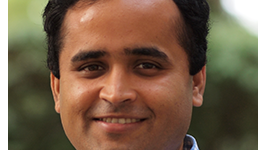On the agenda:
• The foundations of HPC in Europe
• Promoting simulation for SMEs’ competitiveness
• Is Europe to be a global leader or follower in supercomputing?
• PRACE at Horizon 2020
Interview by Stéphane Bihan
Mrs. RIVIERE, as CEO of GENCI and Chairwoman of the PRACE Council, could you briefly present these two organizations and tell us specifically how they interact to develop high-performance computing in France and Europe?
GENCI (Grand Equipement National du Calcul Intensif, or National High Performance Computing Infrastructure) was created in 2007 by the French authorities following a 2005 report pointing out that France was lagging behind in providing computing capacity to our scientists, with the result that they were leaving to work abroad.
HPC is a strategic tool to maintain the competitiveness of a country. As such, the lack of resources presents a real problem for academics and, in the long term, for industry. This is why it was necessary to put in place a genuine policy in this sector. The administration therefore decided to create a specific organization, GENCI, to place France at the highest level in Europe and internationally.
GENCI has three main missions: the first is to lead and support the national strategy for the provision of computing resources for scientific research. The second consists of representing France in any European governmental initiative, i.e. any initiative that requires national representation. Finally, GENCI’s third mission is to promote digital simulation and HPC for research in both the academic and industrial sectors. GENCI is a non-trading company held by the Ministry of Research and Higher Education (at 49%), by CEA and CNRS at 20% each, by the CPU (Conference of University Presidents) (at 10%), and finally, by INRIA at 1%.
At the European level, PRACE (Partnership for Advanced Computing in Europe) did not yet exist when GENCI was founded, but its creation had already begun. Not only was it mentioned in the report on French policy on scientific computing, but the first Scientific Case for PRACE in 2005 had already proposed a roadmap for high performance computing at the European level. This document stated, inter alia, that at the time, no single country could compete with the United States or Japan. China was also on the list, but not at the level where it is today.
It was therefore essential that Europe mobilize. This was realized at both the national and European levels. France had a real problem of scientific competitiveness, and knowing that no member of the Union could compete with the major nations, we needed to unite. In 2008, the European Commission, which was of course anxious that Europe should play its role in high-performance computing, launched a preparatory phase project, PRACE, under the FP7 program, to develop an infrastructure for research at the European level. This initial preparatory phase project was followed in 2010 by implementation phases PRACE-1IP, 2IP, and 3IP, the current phase.
In budgetary terms, GENCI represents €30 million per year and PRACE €530 million over five years until 2015. These €530 million include €400 million from the four machine hosting countries – France, Germany, Spain and Italy – on one hand and, on the other hand, €130 million – €60 million from the Commission and €70 million from the 25 other representatives.
What is the total power of the computing infrastructure available to the European scientific community? How is access to these resources organized?
At the national level, 1.6 Pflops are distributed among three computing centers: the TGCC center at the CEA, the CINES center in Montpellier, and the IDRIS center on the Orsay plateau. Since 2008, GENCI has updated the equipment at these three centers to reach the 1.6 Pflops in question: 280 Tflops at CINES, the first GENCI installation in 2008; more recently, IDRIS with approximately 1 Pflops; and finally, the CURIE machine, which accounts for 2 Pflops. However, 80% of the latter are used for the French commitment to PRACE, the remaining 20% being counted as part of national computing resources.
At the European level, four countries provide 15 Pflops, corresponding to a total of €100 million per year for each of them. France provides the CURIE machine (CEA); Spain provides the MareNostrum machine (BSC) for 1 Pflops; Italy, the Fermi computer (CIneca) for 2 Pflops; and last, Germany provides access to three machines: Hermit in Stuttgart for 1 Pflops, JUQUEEN in Jülich for 6 Pflops and SuperMUC in Garching for 3.2 Pflops.
Access to these resources is open to scientists and industry users based on the sole criterion of scientific excellence assessed by a Committee, the Access Committee, consisting of renowned scientists. PRACE offers three types of access: the first, called “preparatory” access, is intended to conduct tests for the second type of access, called “classic,” which extends over one year on the basis of computing hours granted. Finally, the last type of access is called “multiyear” and concerns large projects on a European scale.
Can you describe the PRACE infrastructure selection and construction process for us?
At GENCI, we issue traditional competitive calls for tender based on our users’ needs. As far as PRACE is concerned, the machines belong to the partners, and they are therefore free to choose the purchasing process for their machines. However, the goal is still to develop a European infrastructure consisting of different machines in order to meet all of the users’ needs.
So PRACE doesn’t finance the purchase of machines itself?
No. France, Spain, Italy and Germany, the four countries who were the first to bet on European computing, finance the purchase of these machines with their own funds.
Is what we are we talking about here only providing resources or is there also ongoing follow-up and support of scientific projects? Where appropriate, can you describe how user support is organized?
Of course, PRACE also meets its users’ needs with a service and support environment such as assistance in porting code. We set up six training centers, with one located in the House of Simulation in France, the purpose of which is to grow the computing ecosystem around PRACE supercomputers, together with the 25 other partner countries.
© HPC Today 2024 - All rights reserved.
Thank you for reading HPC Today.

































